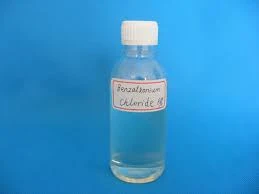Applications of Anionic Polyacrylamide in Various Industries and Environmental Management
The Versatile Applications of Anionic Polyacrylamide
Anionic polyacrylamide (APAM) is a water-soluble polymer that has gained significant attention across various industries due to its remarkable ability to enhance processes such as sedimentation, filtration, and viscosity control. Its unique properties stem from the presence of anionic charges, which allow it to interact effectively with cations and other charged materials. As a result, anionic polyacrylamide finds extensive applications in sectors ranging from water treatment and agriculture to mining and oil recovery.
Water Treatment
One of the foremost applications of anionic polyacrylamide is in water treatment. APAM is widely used as a flocculant, facilitating the aggregation of suspended particles in water. This is particularly valuable in municipal water treatment plants where large volumes of water require purification. The polymer helps clump together tiny particles into larger aggregates, or flocs, which can then be easily removed through sedimentation or filtration. By improving the efficiency of solid-liquid separation processes, APAM enhances the overall quality of treated water, ensuring it meets safety standards for public consumption.
Additionally, APAM is used in wastewater treatment processes, aiding in the clarification of industrial effluents. The incorporation of anionic polyacrylamide helps in the removal of heavy metals and other contaminants from wastewater, enabling industries to comply with environmental regulations and contribute to sustainability efforts.
Agriculture
In agriculture, anionic polyacrylamide plays a crucial role in soil management and erosion control. When applied to soil, APAM can improve water retention, thus enhancing moisture availability for plants. This is particularly beneficial in arid regions where water scarcity poses a significant challenge to crop production. By promoting soil structure and reducing erosion, APAM helps to improve soil health, increase agricultural productivity, and ensure sustainable farming practices.
Moreover, APAM is utilized in irrigation practices, where it aids in the efficient distribution of water throughout the soil profile. The polymer can help in reducing water runoff and infiltration rates, ensuring that more water reaches the root zones of crops. This not only conserves water resources but also optimizes the use of fertilizers, leading to better crop yields.
anionic polyacrylamide uses

Mining and Mineral Processing
The mining industry also benefits from the applications of anionic polyacrylamide. In mineral processing, APAM is employed as a flocculant to aid in the separation of valuable minerals from ore. It enhances the settling of fine particles, improving the recovery rates of minerals and reducing waste. By increasing the efficiency of processing plants, APAM contributes to the economic viability of mining operations.
Moreover, the effectiveness of anionic polyacrylamide in controlling dust in mining sites cannot be overlooked. When sprinkled over surfaces, it helps to bind particulate matter, minimizing airborne dust which poses health risks to workers and surrounding communities. This application contributes to a safer working environment and aligns with health and safety regulations.
Oil and Gas Recovery
In the oil and gas sector, anionic polyacrylamide is utilized in enhanced oil recovery (EOR) processes. By increasing the viscosity of water injected into oil reservoirs, APAM helps to improve the sweep efficiency of extraction processes. This results in higher oil recovery rates and reduces the amount of water used in the process, making it a more sustainable approach to oil extraction.
APAM is also applied in drilling fluids, where it helps to stabilize the borehole and control fluid loss during drilling operations. Its ability to improve the performance of drilling fluids enhances the efficiency of drilling operations, reducing costs and environmental impact.
Conclusion
In conclusion, anionic polyacrylamide is a multifunctional polymer with a vast range of applications that span several critical industries. From water and wastewater treatment to agriculture, mining, and oil recovery, the benefits of APAM are undeniable. Its ability to enhance processes, improve efficiencies, and contribute to environmental sustainability makes it an invaluable resource in modern industrial practices. As industries continue to seek innovative solutions to their challenges, the relevance and demand for anionic polyacrylamide are likely to grow, paving the way for further research and development in its applications.
-
Water Treatment with Flocculant Water TreatmentNewsJun.12,2025
-
Polymaleic AnhydrideNewsJun.12,2025
-
Polyaspartic AcidNewsJun.12,2025
-
Enhance Industrial Processes with IsothiazolinonesNewsJun.12,2025
-
Enhance Industrial Processes with PBTCA SolutionsNewsJun.12,2025
-
Dodecyldimethylbenzylammonium Chloride SolutionsNewsJun.12,2025





